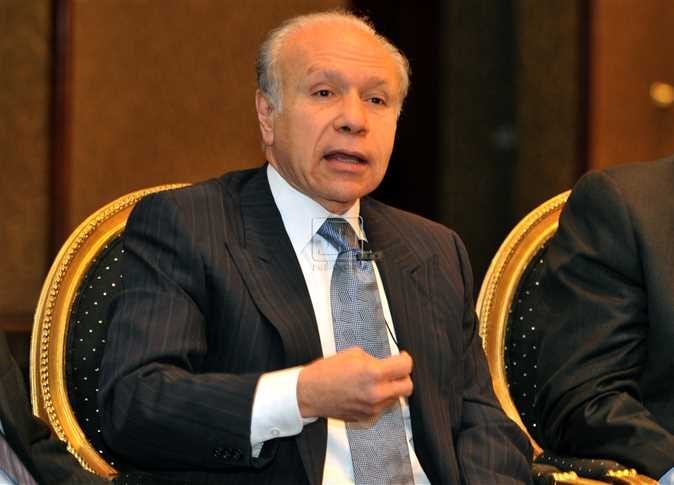Salah Diab, egipski businessman i właściciel gazety „Al-Masri Al-Yawm”, który pisuje pod pseudonimem Newton, opublikował szereg artykułów zatytułowanych Wyzwolenie umysłu i Czy pokazywanie włosów jest uważane za nagość?, w których argumentował, że hidżab (chusta na głowę) i nikab (pełna zasłona na twarz), które nosi olbrzymia większość egipskich kobiet, nie są nakazane przez islamski szariat. Egipskie kobiety, napisał, przyjęły ten zwyczaj w wyniku religijnej indoktrynacji, jaka panowała w Egipcie w latach 1970., i jaka fałszywie przedstawia to jako religijny obowiązek. Pisze, że Egipt miał kiedyś wybitnych reformatorów, którzy dążyli do odnowy religijnego dyskursu, ale konserwatywne siły, włącznie z Al-Azhar, wykluczyły je z publicznej areny i nie pozwoliły na propagowanie ich liberalnych poglądów.
Podkreślając, że nie namawia kobiet do odrzucenia hidżabu, a tylko wzywa do szanowania wyboru tych, które nie chcą go nosić, Diab zaatakował kaznodziei, którzy przez lata ustanowili pogląd, że niemal każda część ciała kobiety, włącznie z jej włosami, jest ’awrah, tj., nagością, która musi być zakryta, pogląd, który nie ma żadnej podstawy w Koranie. Dodał, że wyzwolenie egipskiego umysłu od panującego religijnego dyskursu będzie także wyzwoleniem głów egipskich kobiet od hidżabu.
 Salah Diab (źródło: Al-Masri Al-Yawm, Egipt)
Salah Diab (źródło: Al-Masri Al-Yawm, Egipt)
Artykuły wywołały ożywioną debatę wśród czytelników Diaba i wyrazy poparcia dla jego poglądów, z których kilka cytuje w artykułach.
Poniżej podajemy fragmenty artykułów:
[Ciąg dalszy tekstu nie jest spolszczony]
Liberating Egypt From The Hijab Begins By Liberating It From Benighted Religious Discourse
In a July 19, 2019 article, Diab wrote that religious indoctrination in Egypt was responsible for imposing the hijab on women. He wrote: „Since there is talk of renewing or developing the religious discourse, could we perhaps launch a campaign calling for the removal of the hijab? Iran has a law that imposes the hijab [on women], and in Egypt over 90% of women wear it, most of them based on the belief that it is mandated by the shari’a. [But] we must ask, Who claims this? [The answer is that] it is the religious indoctrination which imposed this reality over the years.
„In the past, in the 1950s, 1960s and even 1970s, female university students used to go bareheaded, whereas today most of them wear a hijab or niqab. This is the result of the religious discourse that began spreading in Egypt in the late 1970s and early 1980s, which presented the hijab as part of the shari’a, when in fact it has nothing to do with the shari’a.
„Historically speaking, the first people who started wearing this garment, the hijab/niqab, were the Jews. As the custom spread, in complete contrast to what one might expect, there was an increase in sexual harassment, which was unknown in the pre-hijab era.
„Do we now have the courage to liberate [women’s] heads from these wrappings? For this to happen, we need one or more models [for emulation] that will serve as a tangible emblem of developing the religious discourse. Religious reformist Gamal Al-Banna[1] enriched the Arabic library with an entire book on the hijab, in which he clarified that it has nothing to do with the shari’a or the [Muslim] religion…
„The problem is that… instead of completing the awakening led by 'Abd Al-Raziq,[2] Muhammad 'Abduh[3] and other reformers – [such as] Nasr Hamid Abu Zayd,[4] Farag Foda,[5] Sa’id Al-’Ashmawi,[6] and the pioneering reformist Gamal Al-Banna – preachers took us back to dark times, when ritual, appearances and literal interpretations overshadowed [the reformist] tendencies in all religions. The reformists were not given an opportunity to appear and present their ideas. On the contrary, Al-Azhar persecuted them and they did not present their enlightened views to the public.
„Liberating heads from without [i.e., removing the hijab] requires first of all liberating them from within. By liberating minds we liberate [people] from any [form of] hijab.”[7]
Should Muslim Women Who Choose To Go Bareheaded Be Considered Infidels?
On July 21, Diab published a reader’s response to this article. He prefaced it with the following remarks: „I am not telling any [woman] to either wear the hijab or remove it. I am defending those who do not wish to wear a hijab. Are they infidels?… Women like my late mother and grandmother, who did not wear the hijab yet strictly and consistently observed the religious commandments, were they non-Muslim? Should we say that Egypt before 1970, between the time of [Egyptian feminist] Huda Sha’arawi’s call for removing the hijab and [the start of] this Wahhabi attack on the Egyptian women’s dress, was not Muslim?[8]
„Modesty is a basic [principle] of Islam, and nobody is speaking against it… [Notice that] the phenomenon of the miniskirt made [only] a brief appearance in Egypt – when Western fashion became afflicted with [this garment] – but soon declined. Conversely, the new form of dress we are discussing [i.e., Islamic dress, including the hijab and niqab] prevails throughout society, among both young and old. It swamped society and persists [to this day] because it entered Egypt in the guise of religion. This was a sweeping attack on the Egyptian dress code that prevailed [at the time], following which a hijab appeared on every head.”[9]
The View Of The Religious Preachers, That Almost Every Part Of The Woman’s Body Is ’Awrah, Has No Basis In The Quran
In an article published one week later, Diab condemned the radical fatwas that define a woman’s hair, and almost every other part of her body, as ’awrah, namely as nudity that must be covered in public, arguing that this has no basis in the Quran. He wrote: „The first mention of ’awrah [in the Quran] is made after Adam and Eve eat from the Tree of Knowledge, violating Allah’s commandment. They covered their privates with a mulberry leaf – that was [the size of] the covering that was required back then. However, as time passed and fatwas were issued, [the meaning of ’awrah] gradually expanded until it included the entire body, in the case of women, so that [today] they even wear gloves to cover their hands. Today the only thing used to cover people’s nakedness is cloth, and people think this cloth is proof of purity, modesty and innocence…
„Thinking about it logically, if women’s hair is ’awrah, why isn’t the man’s? After all, the principle is the same, and there is no discernable difference. The Quran is a miracle and is paralleled by another miracle of Allah: the mind [He gave us], with which we can cite the first miracle [the Quran]. But if we let others [use] the miracle of intelligence on our behalf, they will dictate their own conclusions and opinions.
„Many sheikhs [indeed] seem to believe that hair, both women’s and men’s, is ’awrah. That explains the clothes worn by some of the sheikhs on the satellite channels, who cover their hair with a strange [garment] that looks more like a hijab [than anything else]. The Quran says nothing about hair. As for the verse [that instructs Muslim women] to 'wrap their headcovers over their chests’ [Quran 24:31], the jurists’ interpretation of the phrase 'their chests’ [juyoubihinna] is clear and uncontested. 'Chests’ refers to the openings [of the garment], namely the neck opening…
„Later, fatwas appeared stating that a woman’s voice is ’awrah. Now we have reached the point where hair is ’awrah, voice is 'awrah, driving a car is ’awrah, and working [outside the home] is ’awrah. It’s as though all of the woman is ’awrah. We have begun talking of technicalities and trivialities, while ignoring many true ’awrahs that constantly surround us: fornication is ’awrah, hedonism is ’awrah, excessively fancy dress is ’awrah, lascivious looks, whether by a man or a woman, are ’awrah. It is a harmful simplification to wrap a piece of cloth over the head and then [assume] that we may do as we please.”[10]
[1] Gamal Al-Banna (1920-2013) was a liberal Egyptian intellectual and author who penned many writings on Islam and politics. His views were diametrically opposed to those of his older brother, Muslim Brotherhood founder Hassan Al-Banna.
[2] Egyptian intellectual and author Mustafa 'Abd al-Raziq (1885-1947), who served as the head of Al-Azhar, is considered a reformer of Islamic philosophy.
[3] Renowned religious scholar Muhammad 'Abduh (1849-1905), who served as Egypt’s Grand Mufti, was a pioneer of religious reform in his generation.
[4] Nasr Hamid Abu Zayd (1943-2010) was an Egyptian academic and researcher of Islam.
[5] Farag Foda (1945-1992) was a prominent Egyptian academic, writer, journalist and human rights activist, founder of the Egyptian Society for Enlightenment. He was assassinated by members of the fundamentalist Islamist group Al-Gama’a Al-Islamya after being accused of blasphemy by Al-Azhar.
[6] Muhammad Sa’id Al-’Ashmawi (1932-2013) was an Egyptian intellectual and judge.
[7] Al-Masri Al-Yawm (Egypt), July 19, 2019.
[8] This apparently refers to the rise of Islamic Salafism in Egypt and the Salafist takeover of Egyptian institutions, including Al-Azhar, during Sadat’s period, starting in 1970.
[9] Al-Masri Al-Yawm (Egypt), July 21, 2019.
[10] Al-Masri Al-Yawm (Egypt), July 29, 2019









